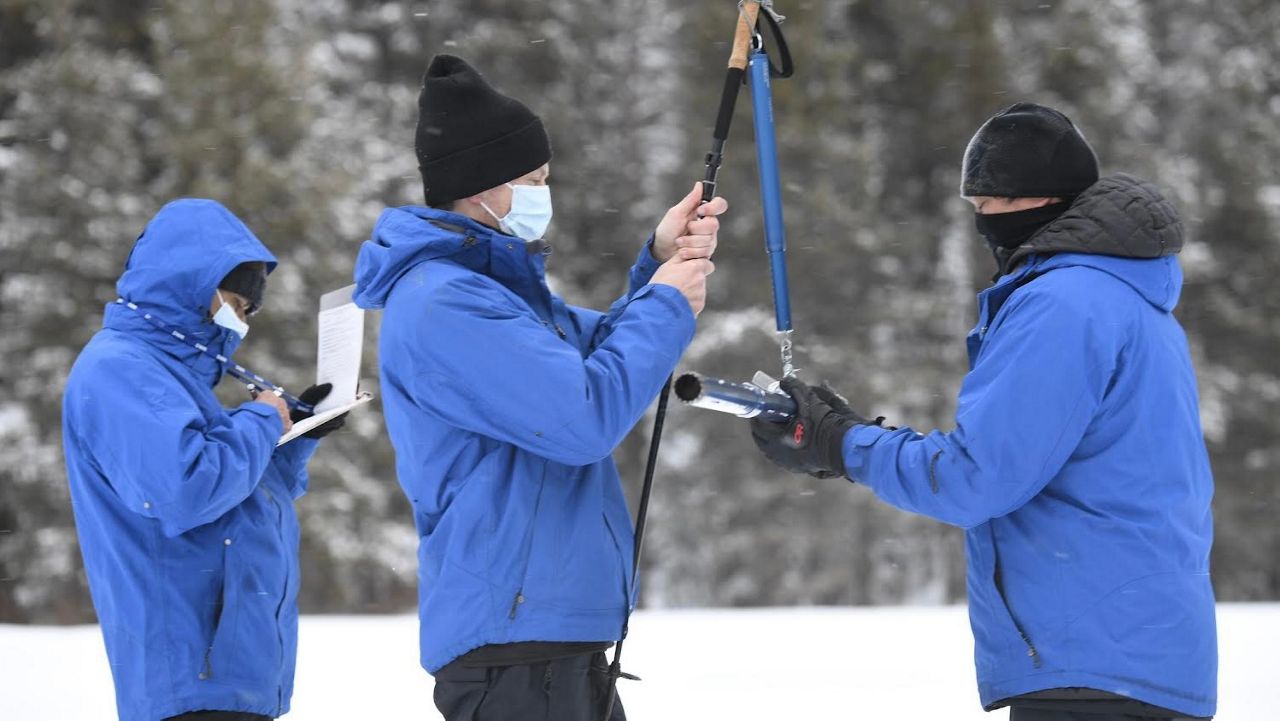WEST LAKE TAHOE, Calif. — The state’s snowpack is 92% of average for this time of year, according to the second snow survey of the season conducted by the California Department of Water Resources Tuesday.
“We all need to be prepared for a third consecutive dry year,” said Sean de Guzman, manager of snow surveys and water supply forecasting for the state during a Facebook Live webcast from the Sierra Nevada mountains. “This drought is still far from over.”
While a category five atmospheric river generated a record amount of rainfall in October last year, that was followed by a dry November, he said. December snowfall boosted the state snowpack, but January has been one of the driest Januaries on record.
“This water year has demonstrated just how variable California’s climate can really be,” de Guzman added. “Our climate is experiencing these volatile shifts from wet to dry, year after year and even month after month, which makes water resources planning and water management challenging in a changing climate.”
The snow’s water content, or the amount of liquid water contained in the snow if it were to melt, is a critical number for water managers. Tuesday's measurement at Phillips Station in West Lake Tahoe showed a snow depth of 48.5 inches and a snow water content of 19 inches.
The department uses that data to predict the spring and summer runoff that determines its water supply forecast for the coming year. About one-third of the state’s water supply comes from snowpack runoff.
In December, snowpack was well above average, but with practically no snow accumulation since then, it’s now near average. “That one dry month of January basically wiped out whatever head start we had as we head towards the end of winter.”
Tuesday’s measurement at Phillips Station was 109% of average for this time of year, but it was just 78% of average for April 1, when snowpack is at its peak in the Sierra Nevada mountains. Phillips Station is one of more than 260 snow courses throughout the state the department measures each winter and early spring to determine how much water will melt and run off to reservoirs in the warmer months.
California’s wettest months are typically December through February, but with dry conditions in the forecast for the first two weeks of February and state reservoirs at 76% average, “we are taking away two of those weeks of the wet period because we’re not accumulating anything. Every single day that goes on that we’re not accumulating any snow, you’ll see that statewide percentage of average keep dropping every single day.”



